I received some really great comments last week about my article on Ephesus, the ancient Greco-Roman city in Turkey!
 Which is amazing and I am now finishing this three-part series with the visit to this fantastic historical site.
Which is amazing and I am now finishing this three-part series with the visit to this fantastic historical site.
Yes, I did try to squeeze it all in two posts, but really, how could I? We’d be missing out on a whole lot of interesting information!
If you haven’t read my past article I recommend you go back and do, because this visit will mean a lot more for you once you know a bit of the historical background.
Visit basics
The site has not been completely excavated and most of what we see today comes from the later periods of the city.
A regular visit has two parts:
The visit to the ancient city itself and the visit to the nearby sites.
So let’s begin with the visit to the city.
Getting to Ephesus
You need to take a flight into Istanbul from any major city like London, Madrid or Paris.
From there you take a connection flight to the city of Izmir, where you can set camp or if you’d prefer to stay closer, you can use Selçuk as a base.
From Izmir you can hire a taxi or take a bus or hire a private tour. The ride is about one hour long.
Map
I’ve taken the liberty of using the map from www.ephesus.us and adapting it to be motionless.
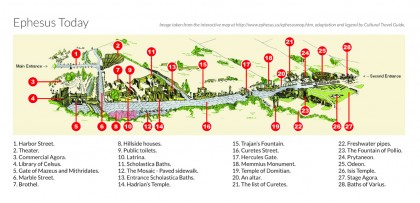
Map, adapted from www.ephesus.us/ephesusmap.htm
Click to enlarge.
I used this map because it shows the important places in their current state. Download a high res PDF of this map.
I’ve also found this alternative map with reconstruction drawings of the different buildings.
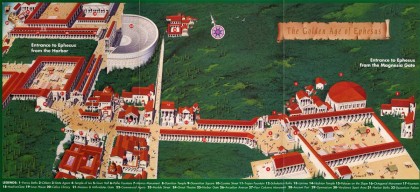
Map with reconstructions, from www.dailyistanbultours.com
Click to enlarge.
Entering the ancient city
The site today has two entrances as we can see in the map above, in ancient times, it had three entrances:
The Magnesian Gate, the Koressos Gate (at the back of the Stadium) and the entrance from the harbor.
Let’s enter from the west side, the harbor side.
You enter by walking the Harbor Street (Also known as Arcadian Avenue) at the end of which you can’t miss the magnificent Theater.
The Arcadian Avenue was the first thing visitors who came from the harbor saw. This street was lit at night with 50 lamps.
You pass the Harbor Baths and the Harbor Gymnasium to the north of Harbor Street. These structures were built during the time of Domitian.
The Theater
The splendid theater is one of the main reasons why this visit is so important.
Built in the Hellenistic period during the reign of Lysimachus and enlarged during Roman times, it takes advantage of the slope of Panayir Hill in the best Greek style.
It can seat 25.000 spectators in 66 rows of seats divided in three horizontal sections.
The stage building had three stories and the façade was decorated with columns, niches, statues and windows.
This theater was used for plays, concerts and discussions and later even for gladiator fights during Roman times.
You can see for yourself in these four fantastic 360° views of the theater.
Continue to walk south down Marble Street to find…
The Commercial Agora
The commercial agora was built in Hellenistic times, but many of its ruins date from the time of Caracalla (211-217 AD).
It had three entrances, one facing the theater, one facing the harbor and one that opened to the Library of Celsus.
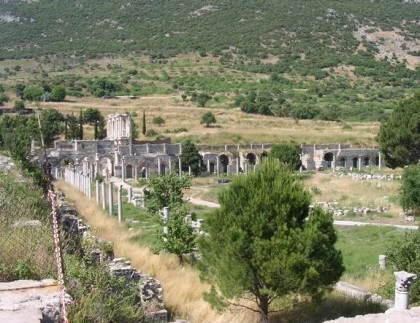
Commercial agora. Photo: www.livius.org
The Gate of Mazeus and Mythridates
This gate was built in 40 AD by the slaves Mazeus and Mythridates in honor of Emperor Augustus.
The area in front of the gate facing the Library of Celsus was used as a small auditorium and the steps used as seats.
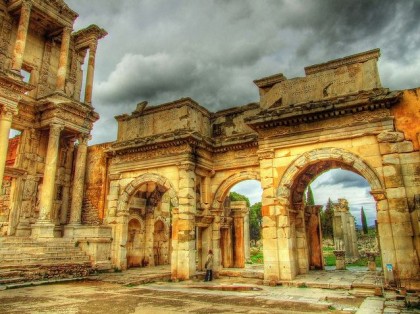
The Gate of Mazeus and Mythridates.
Photo: www.flickr.com/photos/nejdetduzen
The Library of Celsus
Definitely the iconic image of the ancient city, the Library of Celsus is one of the best preserved buildings.
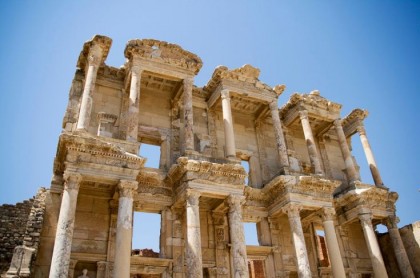
Library of Celsus. Photo: Murat Zeytin.
Built in 117 AD by Gaius Julius Aquila in honor of his father, Gaius Julius Celsus Polemaeanus, a governor in the Roman province of Asia it is believed to have stored 12.000 scrolls.
The library was also Celsus’ tomb and at the time it was the third most important after Alexandria and Pergamum.
A team from Austria restored the façade which has two stories and three entrances.
It is decorated by four statues: Wisdom (Sophia), knowledge (Episteme), intelligence (Ennoia) and valor (Arete).
However, the statues that can be seen today are copies and the originals were sent to the Ephesus Museum in Vienna.
Brothel or Love House
This structure is called the brothel because of a statue of fertility god Priapus that was found there.
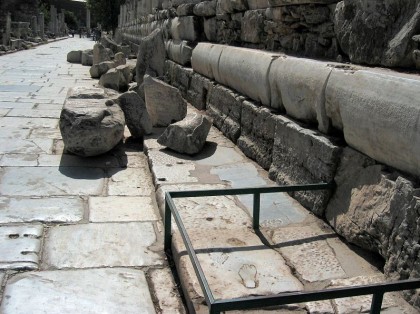
Footprint marking the way to the brothel.
Photo: www.sacred-destinations.com
Built during the time of Trajan, it has two stories, the first floor is decorated with mosaics representing the four seasons and the second floor showcases a series of small rooms.
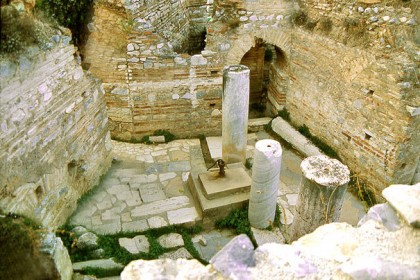
Brothel. Photo: www.ephesus.ws
The bath of the house had an elliptical pool with a mosaic depicting three women drinking and eating.
Latrines
They were part of the Scholastica Baths, built in 1 AD. These were the public toilets of the city and you had to pay a small entrance fee to use them.
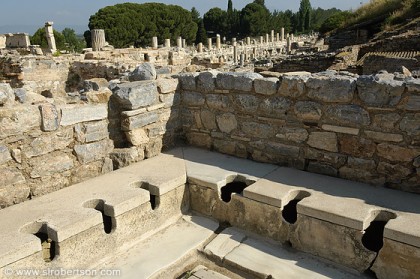
Latrines. Photo: www.slrobertson.com
Hill Houses
These six small palaces on the slope of the hill belonged to the wealthy and were built in the 1st century AD.
They were decorated with beautiful frescoes and mosaics. Two of the houses are open to the public.
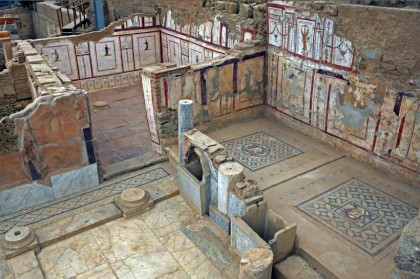
Hill houses. Photo: Dick Osseman.
These houses had indoor water supply and plumbing, with clay pipes that carried hot air and water to heat the space.
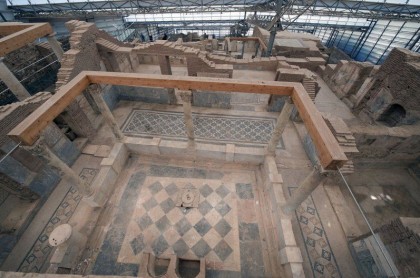
Mosaic floors in hill houses. Photo: Dick Osseman.
Scholastica Baths
Originally built during the 1st century AD, this bath building was restored in the 4th century by a woman called Scholastica, whose headless statue stands on the left of the eastern entrance.
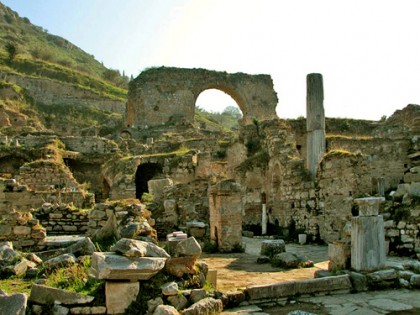
Scholastica Baths.
Photo: www.welcometohosanna.com
The baths were not only a place to get cleaned, but to get a massage or a scrub and to socialize.
People from all walks of life attended the baths free of charge.
Temple of Hadrian
One of the best preserved structures, the Temple of Hadrian was built by P.Quintilius and dedicated to Emperor Hadrian when he came to the city in 128 AD.
The façade showcases four Corinthian columns, two round, two square. The four pedestals in front of the façade are the bases of the statues for Emperors Diocletian, Maximian, Constantius I, and Galerius.
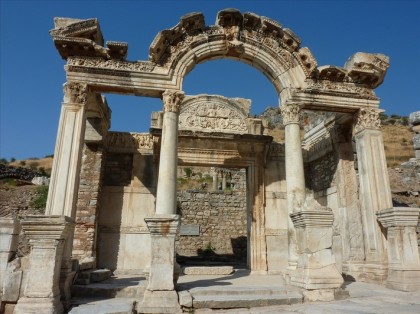
Facade of the Temple of Hadrian. Photo: Pierre JEAN
The arch inside depicts Medusa surrounded by friezes that depict the foundation of the city, the image of Androklos defeating the boar and Dionysus in procession with the Amazons.
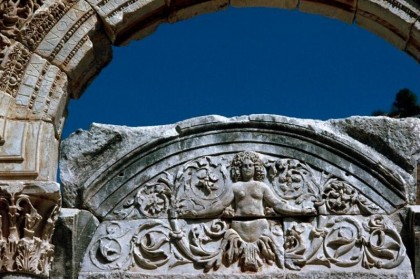
Detail of Medusa at the Temple of Hadrian. Photo: Dick Osseman.
These are copies; the originals are in the Ephesus Museum.
In the façade, the bust of Tyche, goddess of fortune and prosperity of the city.
Next time
In my next post we’ll finish our tour and we’ll take a quick look at some of the sites nearby, which are quite important as well.
Are you excited about visiting this magnificent ancient city yet?
What has been your favorite part so far?
Let me know in the comments field or join the conversation in Facebook!
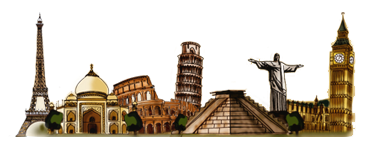


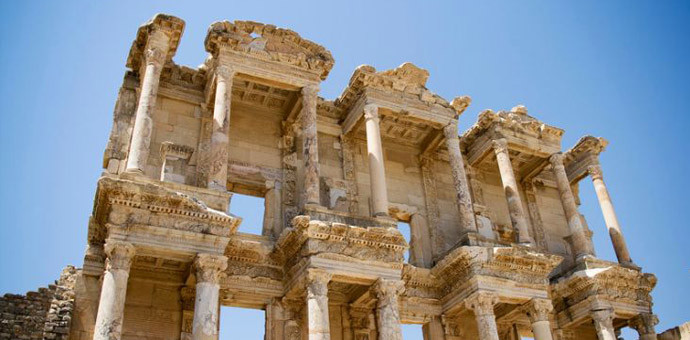
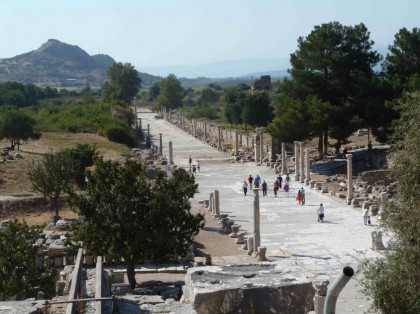
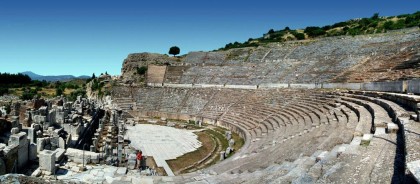
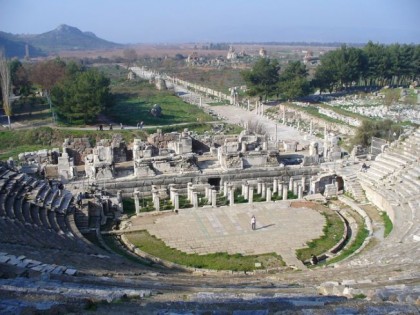
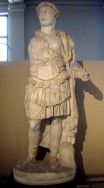
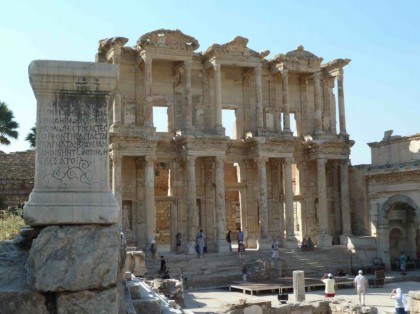
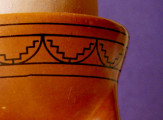
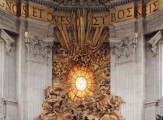
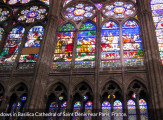
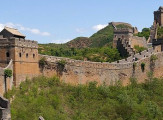
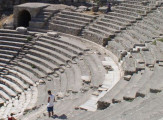
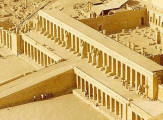

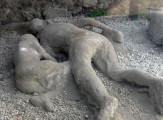
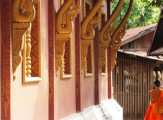
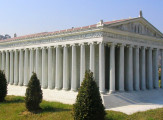


















[…] informações aqui, aqui e […]
Wow- you certainly went into detail. A good round up. We have to say though, we prefer Selcuk as a base, and although it is closed for renovations at the moment, the museum in Selcuk town is also great.
Thank you so much for your comment and clalrification, Natalia!
I am lucky enough to have already visited this treasure, so your post brings back wonderful memories. My favourite par has always been the Library as it is just a breathtaking scene! Of course the toliets are quite a hoot too!
Oh, cool! Are you particularly interested in Greco-Roman ruins? Or was your visit a fortunate coincidence?